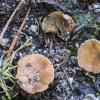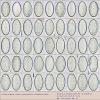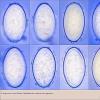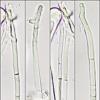
09-12-2025 12:06
 Andgelo Mombert
Andgelo Mombert
Bonjour,Je recherche l'article concernant Hypobryo

07-12-2025 16:07
Arnold BüschlenHallo, ich habe in einer Moos-Aufsammlung (epiphy

08-12-2025 21:04
Mark Stevens"Hello everyone,I'm relatively new to microscopy (

08-12-2025 18:59
 Lothar Krieglsteiner
Lothar Krieglsteiner
.. found by a seminar-participant, I do not know t

08-12-2025 17:37
 Lothar Krieglsteiner
Lothar Krieglsteiner
20.6.25, on branch of Abies infected and thickened

16-03-2014 22:00
Hello,I found this species a few months ago but ha

08-12-2025 13:39
Thomas Læssøehttps://svampe.databasen.org/observations/10572899
 Hi evrybody,
Hi evrybody,Apothecia 7-15mm in diameter, on a small slope of a mountain stream to 1826 m. in altitude between roots of Juniperus communis and next to bryophytes. Stalk very short, almost hidden in the adhering earth. Smell unpleasant, sulfurous components.
Microscopy:
Spores oval, smooth, (15.8) 16.3 to 18 (18.5) x (9.2) 9.4 to 10.3 (10.8) µm, Q = (1.6) 1.64 to 1.8 (1.9), N = 62;I = 17.2 x 9.9 µm; Qe = 1.7, enveloped in a mucilaginous sheath (0.9) 0.95 to 1.5 (1.7) µm;Me = 1.2 µm.
Asci no amyloid, 266.8 to 295.9 x 13.2 to 15.2 µm; I = 282.6 x 14.4 m. Bifurcated or single base.
Paraphyses filiform, septate, slightly widened at apex, often with diverticulate growths.
Marginal hyphae septate, sinuous and rather variable morphology, apex widened, more or less diverticulate (3.8) 3.9 to 6.9 (7.7) µm thick.
Texture of two types: under hymenium, texture intricata from 160.9 to 181.7µm formed by hyphae (4.5) from 5.1 to 8 (9.4) ?m. Then, texture
globuloso-angularis 90.7 to 102.89 µm, with elements of (17.3) 19.2 to 27.7 (28.8) µm in diameter.
According to the work "GARNWEIDNER, E., T. R. LOHMEYER, H. MARXMÜLLER (1991) Vel-Geopysis foetida., G. Alpine v. Taxa nahestehende und Höhnel - mehr als Fragen Antworten", mucilaginous sheath of spores and stipe barely evident, appears to be an important element that distinguishes Geopysis alpina.
My spores measurements are somewhat larger than those defined in this work, but I do not know how important it can be.
I would like to seek your opinion on this collection.

I have write Geopysis instead of Geopyxis!!

Hi Fermin.
This collection enters in the alpina/foetida complex. I sequenced collections with and without smell, and all are the same...
Nico

I'm afraid that.









